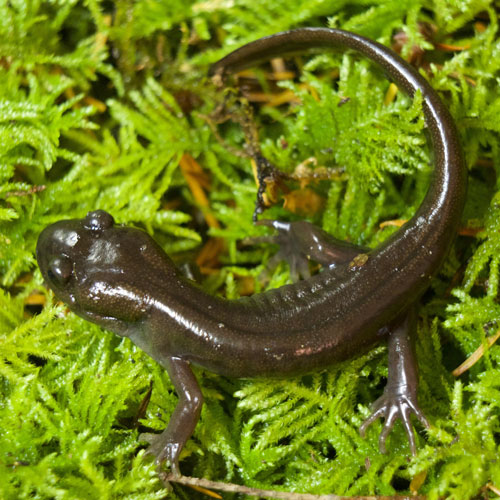Fast Facts
Where they live:
- View a map of where they live.
- Have widest distribution of any North American Salamander.
- In Washington State are found east of the Cascade Mountains in Eastern Washington and Columbian basin.
- Prefer moist habitats, as long as there is a source of fresh water and some sort of the substrate they can burrow in
- It can often be difficult to find tiger salamanders despite their abundance, due to the fact, that they spend most of their time buried (up to two feet!) in the ground.
Breeding
- Breeding season is late winter and early spring depending upon temperature and elevation.
- Will not lay eggs in water that contain predatory fish
- Eggs are attached to debris in water or to the substrate at the bottom
- Larval stage is about ten weeks. In higher elevations, the larvae may overwinter
- Larvae have very large heads and external gills are very long.
- If terrestrial conditions are stressful (from contamination or if it is too cold) the larvae can mature and reproduce in their larval state, although this significantly lowers their life span. This is referred to as neotony. Often times the mature larvae become larger than their terrestrial counterparts.
Cool Biology Facts
- Known to have voracious appetites, eating anything they can get into their mouths-including prey that is the same size as they are
- Can live a long time in the wild, up to 10-16 years!
- Often used as fishing bait and can be introduced into new areas by accident. This can have a significant effect on other species or amphibians in the area because tiger salamanders are carriers of the deadly chytrid fungus that has been a major threat for many frog species.
Threats
- Main threats include the introduction of predatory fish into their breeding ponds, pollution and habitat destruction. View their status on the IUCN Red List of Threatened Species.
Note: Some experts refer to the Washington tiger salamander as Ambystoma mavortium instead of Ambystoma tigrinum.

Amphibians & Reptiles of Washington
Do you know where rattlesnakes live in our state? Or which salamander breathes through its skin? Explore the fascinating diversity of the 26 species of amphibians and 28 reptiles found in Washington state.

